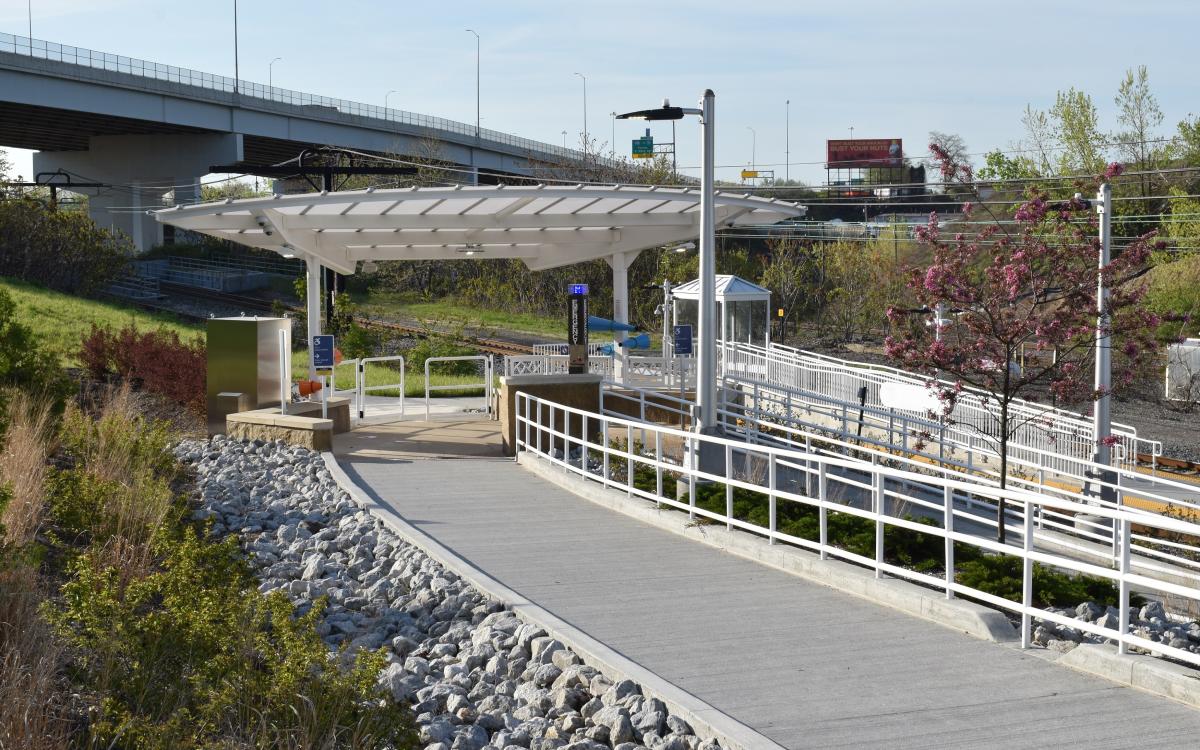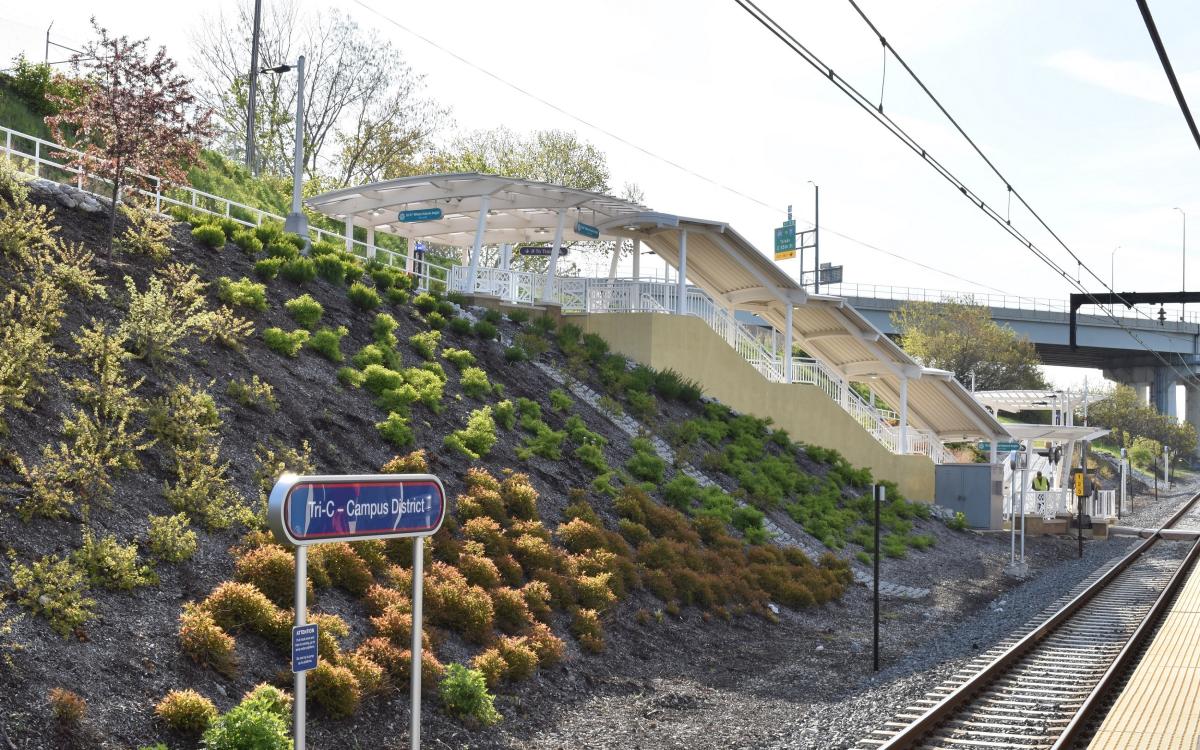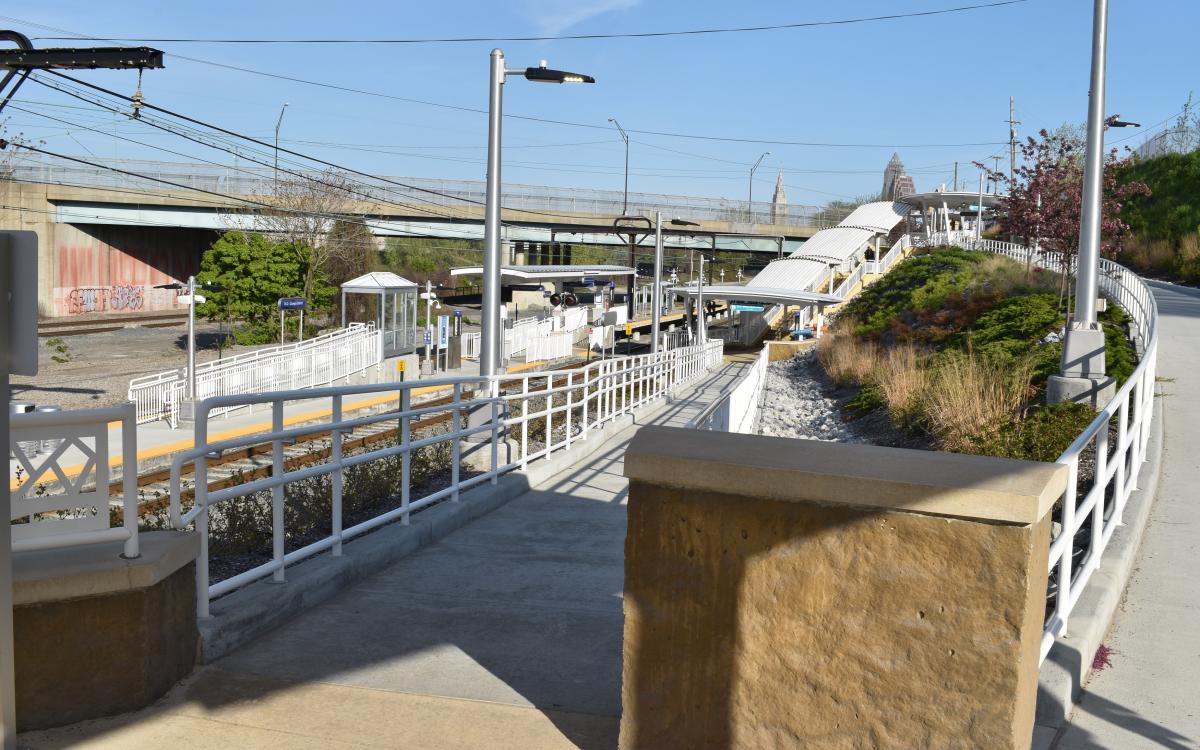Cleveland, OH
United States
The Tri-C – Campus District Station serves the Greater Cleveland Regional Transit Authority’s (GCRTA) Green/Blue light rail lines and Red heavy rail line on the east site of Cleveland, Ohio. It is the first station east of the downtown hub at Tower City Station. The original station is a combination of a concrete light rail platform built in the 1980s and a wood heavy rail platform built in 2005 as an emergency evacuation staging area. The station is located approximately 26 feet beneath the bottom of the Broadway Ave. Bridge making visibility form the street vary limited. Adjacent to the site on one side is a steep overgrown hillside and an activate commercial rail lime on the other. The station itself was in disrepair and needed to be functionally upgraded and rehabilitated to meet current ADA Standards.
The design of the station evolved from the public feedback received during the Alternative Analysis process. Varieties of suggestions were made, but in the end, the consensus was to focus on how to provide a safe and welcoming ADA compliant access along the steep hillside to the north. This involved creating design options to explore the route from the entrance to the platforms. A comparison of the trade-offs were made to understand the length of the route with ramps, or as a sloping walk. In response to the studies, a hybrid design of both ramps and sloping sidewalks was proposed.
A new sloped sidewalk was constructed following the route of an old trolley line. Once you reached the end of the site, the path switches back and turns into an ADA compliant ramp to complete the decent. Along the access path, covered rest nodes with seating were provided. The station’s entrance was relocated off the bridge to an existing bus stop and a covered plaza with seating and bike racks was constructed. This allowed a better transition space between the bus and rail system, increasing the connectivity between the two modes of transportation.
To enhance the customer experience and safety, visibility to and from the station was increased. The project also provided new LED lighting, wayfinding signage, cameras and emergency call boxes and removed the overgrown, invasive vegetation. 74% of all plants brought to the site were native plants. The remaining 26% were non-native, yet noninvasive and adapted. They were chosen because to help stabilize the steep slope, and thrive with no irrigation, and very little maintenance. A bioretention cell was constructed to deal with as much stormwater on site as possible and any soil excavated was disposed of on site.
“As an organization, the GCRTA is commitment to protecting the environment and already has many sustainability practices in place (recycling, no smoking, reducing our fleet’s vehicle emissions)," notes Brian Temming, Greater Cleveland Regional Transit Authority, Quality Assurance Manager. "The Sustainable SITES Initiative helped us to keep the design team focused on that commitment while enhancing the customer experience at the station and making public transportation more accessible.”



